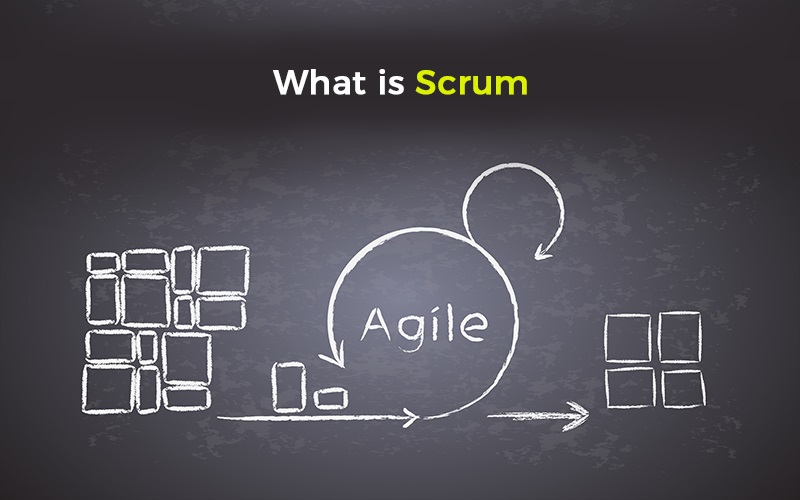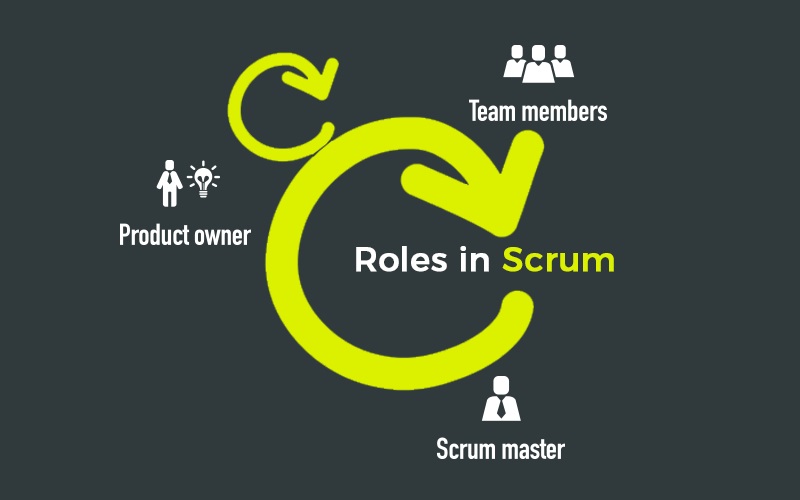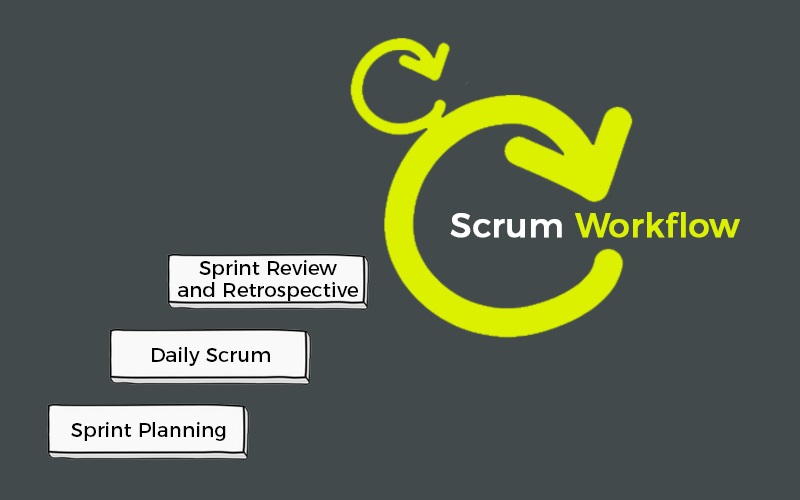Scrum is based on agile framework used for product development, which focuses on the iterative and incremental progress. One of the key principles of the Scrum is to recognize the facts that customers can change the requirements at any point of time and the team might encounter any unforeseen challenge.

Contents
Roles in Scrum

There are specific pre-defined roles in scrum. These different roles are mentioned below.
1) Product Owner
All the stakeholders are part of this particular role. The primary role of the product owners to ensure that the product developed by the team meets the requirements and specifications. Product owner is also responsible for the timely and proper communication to the stakeholders, apprising them about the progress and vice-versa.
2) Development Team
This is the team who is actually responsible for delivering the end product to the customer, based on the requirements specified by them. Ideally, a development team consists of 3 to nine members, although there might be different roles in the team. They work with external teams as well like the PMO (Project Management Office).
3) Scrum Master
Scrum master is the person responsible for facilitating the Scrum. The person in the scrum master role should highlight the risks identified by the team to the management, so that they can be addressed to ensure that the team will be able to deliver the components as per the sprint schedule.
Scrum Workflow

Get yourself trained to be a Certified Scrum Master
For the development of Scrum, the most critical unit is Sprint (Iteration). Every sprint is planned well in advance and must be completed within a certain pre-defined deadline. As every sprint is a time-bound activity, the steps in the sprint should be clearly defined before it is initiated. The basic idea of having a sprint in place is to ensure that after every sprint, the desired product is delivered, as per the requirement.
As mentioned earlier that each module of sprint should be defined well in advance, let’s have a look at the various modules of the Sprint.
- Sprint Planning
This is the first activity, which needs to be performed when sprint is started. Generally, a sprint planning event is conducted by the Scrum team. The objective of the sprint planning event it to identify the scope, define the deliverables and an estimate for the sprint. Also, any backlog from the previous sprint, which will have a dependency while implementing the current sprint, should be clearly identified and defined.
- Daily Scrum
Daily scrum is also known as the Stand-up. The primary objective for having this meeting is to ensure that not only the Scrum Master, but the complete team is updated about the development in the sprint or about any challenges. Anyone can join the daily scrum but few guidelines should be followed very strictly:- The meeting should happen daily without any fail.
- The meeting should be conducted at the same time and same place, irrespective of who can join it from the team.
- The meeting should not be extended beyond 15 minutes.
Although anyone can participate in the daily scrum, the inputs are expected only from the development team. The development team is expected to share the below mentioned information:
- What tasks of the sprint has been completed yesterday?
- What tasks will be completed today?
- Any risk or road-block identified or foreseen?
Any specific risk or roadblock identified by the development team should be noted by the Scrum master and should be highlighted in the correct forums, to the correct stakeholders, to ensure smooth execution of the Sprint.
- Sprint Review and Retrospective
As the sprint comes to an end, two different meetings should be conducted. Sprint review and sprint retrospective. There are specific guidelines which need to be followed for conducting these meeting.
Guidelines for Review Meeting
- Team should not showcase anything which is not completely done.
- The duration of the meeting should not exceed 2 hours for a 2-week sprint (should be applicable on pro-rata basis for other sprint durations)
Guidelines for Retrospective Meeting
- The meeting should be chaired by the Scrum master.
- The duration of the meeting should not exceed 1 hour for a 2-week sprint (should be applicable on pro-rata basis for other sprint durations.)
- Highlight the noteworthy points in the sprint and discuss areas of improvement.
Like guidelines, the objectives of these meetings are also different.
Objective of the Review Meeting
- Team reviews the work that has been completed and also the work which has not been completed.
- Showcase the completed work to the stakeholders.
- Identify the scope for the next sprint and decide on the collaborative efforts from the all the stakeholders.
Objective of the Retrospective Meeting
- Team discuss about the “Good/Bad/Ugly” points in the last sprint.
- Discussion on CSI (Continual Service Improvement) plan.
Extensions
These activities are not considered to be the part of the core workflow process of Scrum but are commonly performed as part of the scrum.
- Cancelling a Sprint: The product owner has the right to cancel a sprint at any point of time based on the inputs received from any team member, scrum master or from the management.
- Backlog Refinement: This is an ongoing process to review the backlogs and accommodate them in upcoming sprints based on the priorities of the particular development piece.
Andolasoft’s Orangescrum offers both a SaaS as well as an Open source platform for task and agile project management collaboration platform for software and product development teams of all sizes.












